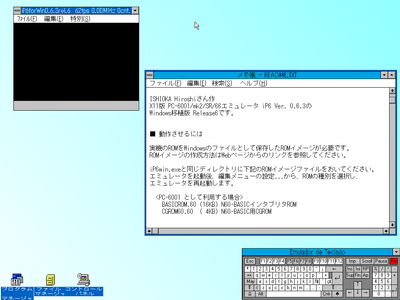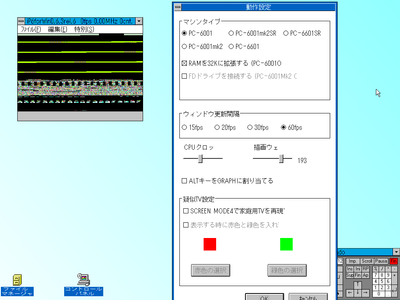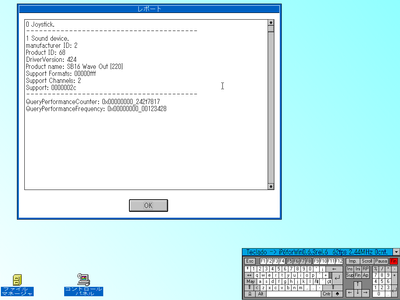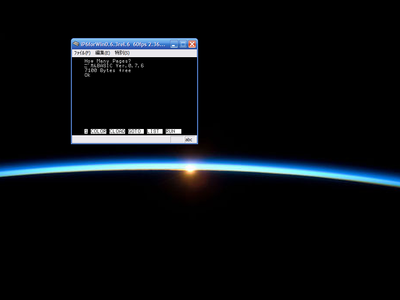Reply 320 of 331, by Jo22
- Rank
- l33t++
Update. Found an early emulator for the NEC PC-6000 series, iP6/Windows.
This platform was better known in Europe/US as the NEC TREK computer system.
The latest release runs on Windows 3.1+Win32s, but there's a problem with the video.
Issue seems to be on the Windows 3.1 side, in GDI/WinDIB. We saw a similar issue with vMac before.
Just to be sure, I used an unaccelerated SVGA driver and different colour depths, as well.
On European Windows XP, it runs as expected. NT 3.51 failed (no luck w/ MSIME32).
If you're on Windows 9x or an older Windows NT operating system that's not Japanese,
you may need the WINNLS dummy DLL or the real thing (WINNLS.DLL, IMM.DLL)
See https://otakuworld.com/index.html?/toys/utils.html
The emulator can be found at http://p6ers.net/mm/pc-6001/
It emulates the basic PC-6001 (32KB),-which basically has no software support-,
as well as the more popular PC-6001 mk2 and successors: PC-6001 mk2SR, PC-6601 and PC-6601SR.
A floppy drive for the PC-6001 Mk2 seems to be emulated, too.
Specs of the basic model (PC-6001)
NEC µPD780 CPU (Zilog Z80 clone),
16 KB RAM (32 KB max expansion)
AY-3-8910 3-voice PSG
ROM Cartridge connector
cassette tape interface
2x joystick port
parallel printer connector
composite video output, RF modulator output
It supports four screen modes; 32x16 characters with 4 colors,
64x48 pixel graphics with 9 colors, 128x192 graphics with 4 colors,
and 256x192 graphics with white and green colors.
Edit: Demonstration of different video modes: https://www.youtube.com/watch?v=TbEVbHwsB6I

Source: https://en.wikipedia.org/wiki/File:NEC_PC-600 … _brown_seat.jpg
NEC TREK pictures: http://www.blackdiamond.co.za/incomp/nectrekpix.html
PS: I've attached an archive containing the versions on the aforementioned website.
In addition, replacement files for the BASIC interpreter and the character font are provided (BIOS files).
I hope that's okay - to my understanding, these are free remakes of the originals (GPL license etc).
They're merely usable for getting basic emulation of the original PC-6001 going, also.
That being said, I'll remove them on request, of course. There are no bad intentions.
I've merely attached them, because they're really hard to find.
It requires lots of patience and traveling across Japanese language websites.
"Time, it seems, doesn't flow. For some it's fast, for some it's slow.
In what to one race is no time at all, another race can rise and fall..." - The Minstrel
//My video channel//




